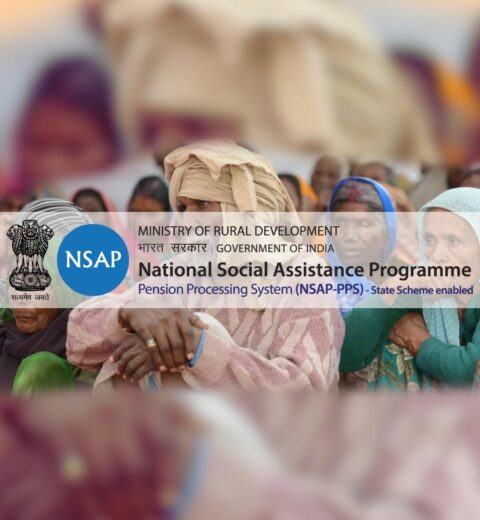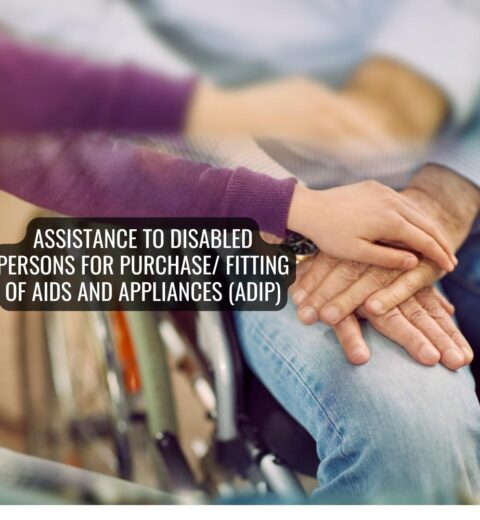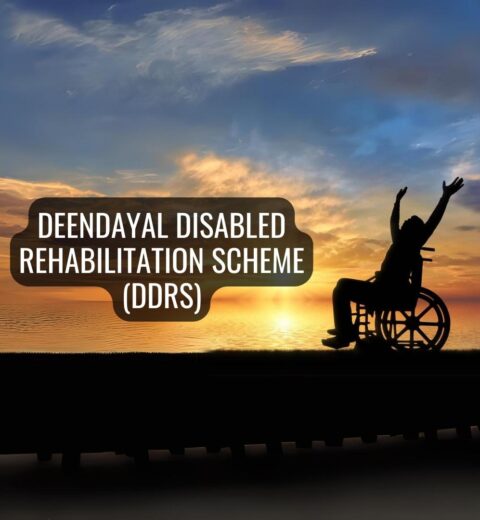Introduction:
In the era of digital innovation, a profound transformation is underway in the realm of education, marked by the advent of Accessible E-textbooks designed specifically for students with visual impairment. As we navigate the digital landscape, the significance of these accessible textbooks, tailored for blind students and individuals with visual disabilities, becomes increasingly evident. This introduction sets the stage for an in-depth exploration of the revolutionary shift from traditional print textbooks to Accessible Digital Textbooks, emphasizing their role as a vital educational resource for divyang individuals. By unlocking the potential of technology, these textbooks not only break down barriers but also cater to the unique needs of persons with disabilities, fostering a more inclusive and empowering learning experience for those navigating the educational journey with visual impairment. In the digital age, the evolution of educational resources has witnessed a transformative stride towards inclusivity, and nowhere is this more evident than in the advent of accessible e-textbooks for students with visual impairment. This blog embarks on a comprehensive exploration of the revolutionary shift from traditional print textbooks to Accessible Digital Textbooks, particularly tailored for the unique needs of blind students and individuals with visual disabilities. Delving into the myriad benefits, features, and the broader significance of these accessible textbooks, this narrative unfolds the story of how technology is fostering a more inclusive educational landscape for divyang individuals.
The Rise of Accessible E-Textbooks:
The rise of Accessible E-Textbooks marks a transformative chapter in educational accessibility, particularly for students with visual impairment. These innovative digital resources, often equipped with assistive technologies, transcend traditional print textbooks by providing a lifeline for individuals with visual disabilities. Tailored for the unique needs of blind students, these textbooks go beyond mere digital replicas of print materials. They incorporate features such as text-to-speech functionality, adjustable fonts, and compatibility with screen readers, ensuring that students with visual impairment can engage with educational content independently. The blog delves into the myriad ways in which Accessible E-Textbooks break down barriers, fostering inclusivity and empowerment in the educational journey for divyang individuals, thereby contributing to a more equitable learning environment. These digital resources, equipped with assistive technologies, are meticulously designed to break down barriers and empower blind students by granting them independent access to educational materials. The blog examines the various ways in which accessible e-textbooks facilitate an enriched learning experience, offering functionalities like text-to-speech, adjustable fonts, and compatibility with screen readers. Through these features, these digital textbooks not only accommodate diverse learning styles but also contribute significantly to the autonomy and academic success of individuals with visual disabilities.
Textbooks Tailored for Blind Students:
Accessible E-textbooks, specifically tailored for blind students, represent a pioneering leap towards addressing the distinctive challenges faced by individuals with visual impairment. These digital resources go beyond conventional print textbooks, integrating specialized features designed to accommodate the unique needs of blind learners. Incorporating functionalities such as Braille compatibility, audio descriptions, and tactile graphics, these textbooks provide a personalized and inclusive approach to education. By catering to the specific needs of blind students, they ensure a more enriched and participatory learning experience, fostering equality in educational opportunities. This section of the blog sheds light on how these Accessible Digital Textbooks for blind students play a pivotal role in dismantling barriers, promoting independence, and empowering visually impaired learners in their academic pursuits, thereby contributing to a more equitable and inclusive educational landscape. The blog delves into the specialized features incorporated into these textbooks, such as Braille compatibility, audio descriptions, and tactile graphics. By catering to the specific needs of students with visual impairment, these textbooks ensure that blind learners can engage with academic content in a manner that aligns with their individual preferences and abilities. The personalized nature of accessible e-textbooks contributes to a more inclusive and empowering educational experience for blind students, fostering a sense of equality and promoting active participation in academic pursuits.
The Impact on Divyang Individuals:
Beyond the confines of traditional educational settings, Accessible E-textbooks wield a profound impact on divyang individuals, transcending the boundaries of academic learning. These innovative digital resources, crafted with the specific needs of persons with visual disabilities in mind, extend far beyond the classroom, empowering individuals to embark on a continuous journey of knowledge acquisition, professional development, and personal enrichment. By providing a versatile platform that caters to diverse learning preferences and abilities, these textbooks contribute to the lifelong learning and skill development of individuals with visual impairment. The blog explores how Accessible Digital Textbooks become catalysts for societal integration, fostering a culture of inclusivity and equality for persons with disabilities. As these digital resources seamlessly adapt to the evolving educational landscape, they play a pivotal role in shaping the broader narrative of accessible learning for divyang individuals, promoting independence, and contributing to their overall well-being. This section explores the broader impact of accessible e-textbooks on divyang individuals, emphasizing their significance beyond academic settings. Accessible textbooks for persons with disabilities extend far beyond the classroom, empowering individuals to pursue lifelong learning, professional development, and personal enrichment. The blog sheds light on the transformative role of these digital resources in fostering a culture of continuous education and skill development among individuals with visual impairment, ultimately contributing to their overall well-being and societal integration.
Overcoming Challenges:
While the advent of Accessible E-textbooks for students with visual impairment has ushered in a new era of inclusivity, it is essential to acknowledge and address the challenges that accompany their widespread adoption. This section of the blog navigates through considerations such as technological infrastructure, affordability, and awareness. It delves into the intricacies of ensuring that these innovative digital resources reach a broader spectrum of individuals with visual impairment, despite potential barriers. By exploring solutions and initiatives aimed at overcoming these challenges, the narrative highlights the commitment to making Accessible Digital Textbooks accessible not only in terms of content but also in terms of distribution and affordability, ensuring that the benefits of these resources are maximized for students with visual disabilities. Issues such as technological infrastructure, affordability, and awareness are explored, alongside potential solutions to ensure that these digital resources reach and benefit a broader spectrum of individuals with visual impairment.
Future Prospects and Innovation:
Looking towards the future, the blog contemplates the promising prospects and ongoing innovations in the realm of Accessible E-textbooks for students with visual impairment. As technology continues to advance, the narrative explores potential avenues for enhancing these digital resources. From the evolution of assistive technologies to collaborative efforts between educators, technologists, and publishers, the blog envisions a landscape where Accessible Digital Textbooks continually evolve to further enhance accessibility and inclusivity in education. The discussion extends to the role of emerging technologies and the potential integration of artificial intelligence to create more personalized and adaptive learning experiences for students with visual disabilities. By examining the trajectory of innovation, the narrative seeks to paint a picture of a future where Accessible E-textbooks become even more sophisticated, ensuring an equitable and enriching education for persons with visual impairments. From advancements in assistive technologies to collaborations between educators, technologists, and publishers, the narrative envisions a future where digital textbooks for persons with disabilities continually evolve to enhance accessibility and inclusivity in education.
Conclusion:
In conclusion, the journey from conventional print textbooks to Accessible E-textbooks for students with visual impairment signifies a monumental leap towards creating a more inclusive and equitable educational landscape. These Accessible Digital Textbooks, specifically designed for blind students and individuals with visual disabilities, transcend the limitations of traditional learning materials. By incorporating features such as text-to-speech functionality, Braille compatibility, and tactile graphics, these digital resources foster independence, equality, and an enriched learning experience. This blog has explored the rise of these accessible textbooks, their tailored features for blind students, and the broader impact on divyang individuals. While challenges in terms of technology, affordability, and awareness persist, the blog emphasizes ongoing efforts to overcome these barriers. Looking to the future, the narrative envisions continued innovation and technological advancements, ensuring that Accessible E-textbooks evolve to meet the diverse needs of students with visual impairments, ultimately contributing to a more accessible and empowering educational journey for persons with disabilities. These digital resources not only cater to the unique needs of blind students but also contribute to a broader vision of education as a universal right. As technology continues to advance, the blog underscores the transformative potential of accessible e-textbooks in empowering individuals with visual impairment, fostering independence, and reshaping the narrative of education for persons with disabilities.




